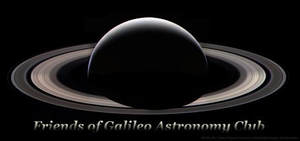FOG Blog
|
Sky Report by Ted Gruber
Evening Sky Jupiter (magnitude -2.1) and Saturn (0.6) become visible in the south-southwest as darkness falls. Jupiter currently sets in the southwest just before 8:30pm, and Saturn just afterward. By mid-December, both planets set just after 7:00pm. The moon passes 2° south of Jupiter and 3° south of Saturn the evening of November 19. Jupiter and Saturn appear to inch closer together with each passing evening. On December 16, the two planets appear about a moon-width apart, with a crescent moon appearing about 3° below them. Then on December 21, Jupiter and Saturn appear just 0.1° apart, meaning the two planets can be seen in the same telescopic field of view at low power. Mars (-1.5) becomes visible high in the eastern sky as darkness falls. The red planet currently sets in the west just after 3:30am. By mid-December, Mars dims by about a full magnitude and sets just before 2:30am. Morning Sky Venus (-4.0) currently rises in the east-southeast around 4:30am, and just before 6:00am by mid-December. The moon appears just above Venus in the early morning hours of December 12. Mercury (-0.7) currently rises in the east-southeast about 5:45am and remains visible until fading into the morning sunlight. The innermost planet rises about five minutes later and appears lower to the horizon each morning, until vanishing into the sun’s glow by the end of November. Meteor Showers The Leonids meteor shower peaked in the early morning hours of November 17 and remains active until November 30. The Geminids meteor shower is active from December 4 to 17, peaking the night of December 13-14. The moon will not be a factor this year, and the best viewing should occur after 11:00pm on December 13 through the early morning hours of December 14. It is typically one of the richest showers of the year and may produce as many as 100 to 150 meteors per hour around the 2:00am peak. The Geminids appear to radiate from a point in the southeastern sky in the constellation Gemini. Moon Phases First (11/21), full (11/30), last (12/7), new (12/14), first (12/21), full (12/29)
0 Comments
Your comment will be posted after it is approved.
Leave a Reply. |
Friends of Galileo
We are astronomy enthusiasts who love to learn and to share our wonder at the amazing sights right overhead. Archives
February 2024
Categories
All
|

 RSS Feed
RSS Feed